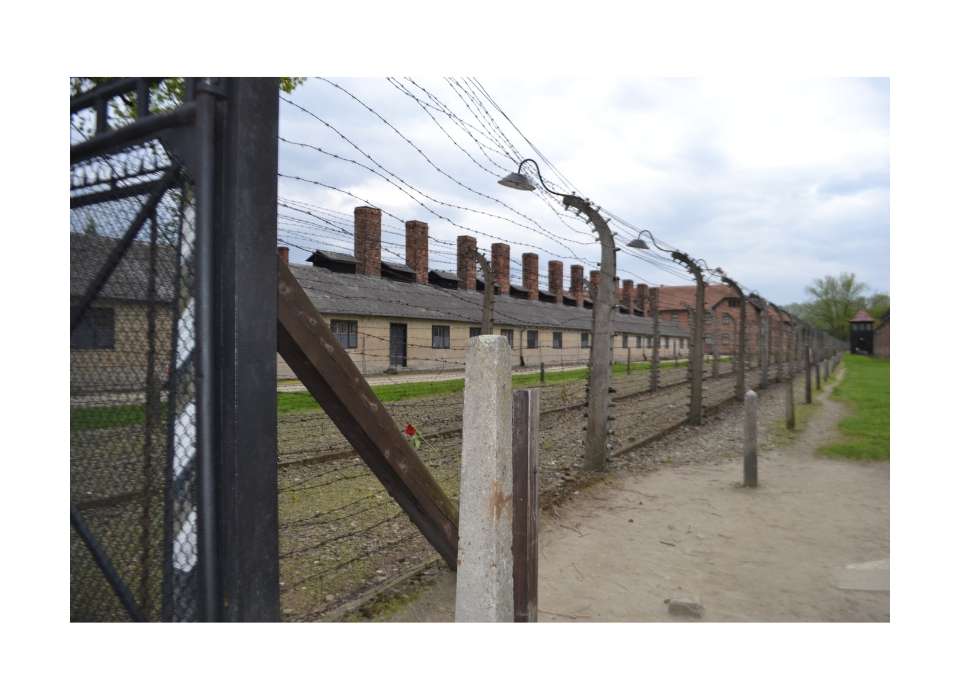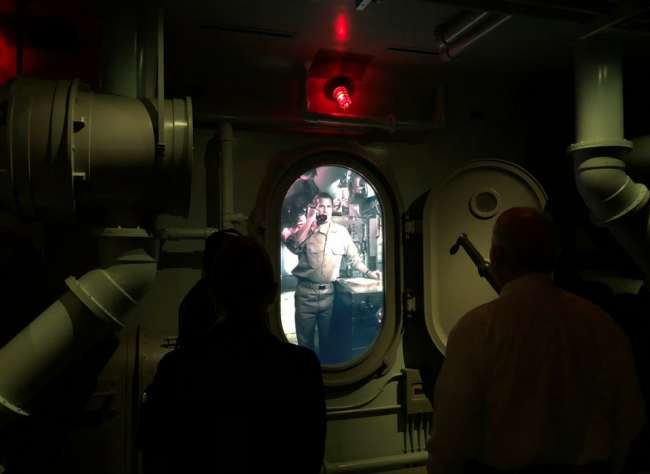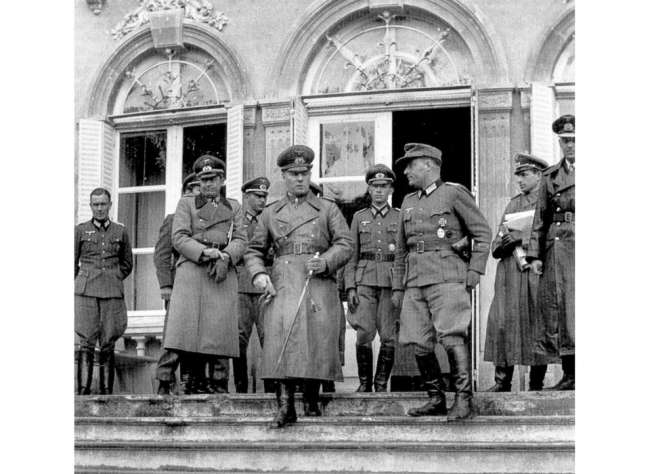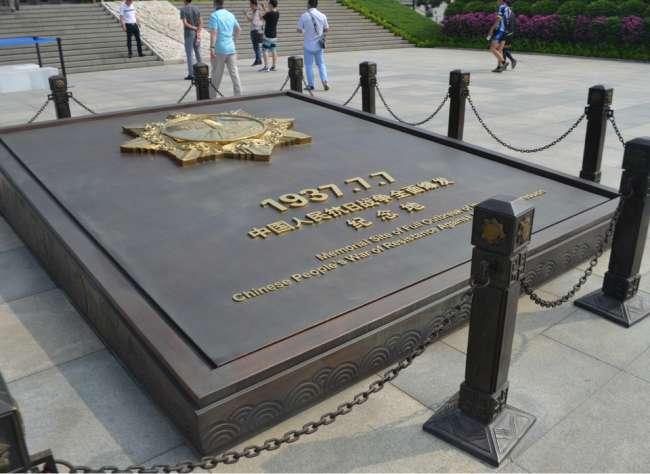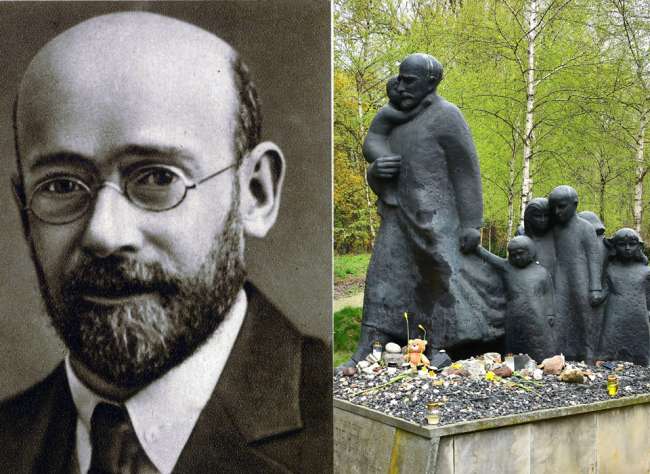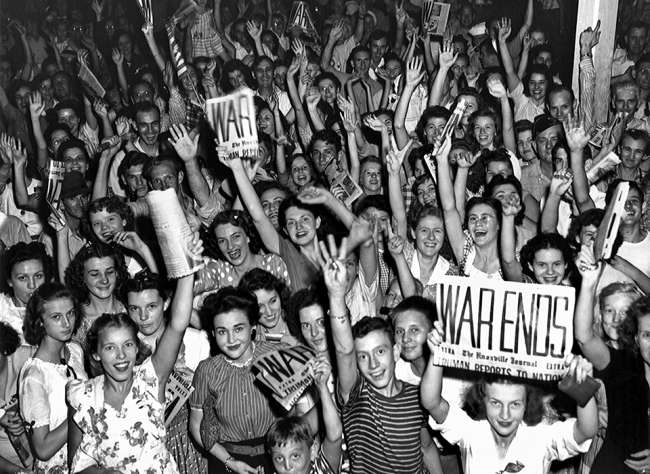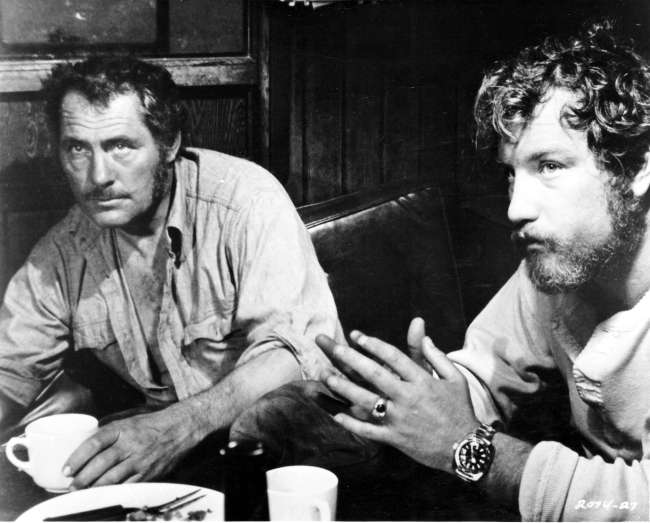On January 27, 1945, the Soviet Red Army liberated a Nazi concentration camp outside Oswiecim, Poland, known today as Auschwitz-Birkenau. In May 2017, I visited there for the first time while on a Museum tour. The lead photograph on this post is the entryway to the Auschwitz site.
The infamous gate with the words Arbeit Mach Frei forged in the sign was just above my head when I turned to the right and snapped this photograph, looking down the barbed wire fence toward a sentry box. This is what people saw as they trod into Auschwitz, looking away rather than up. On the day I was there, someone had hung a red rose on the barbed wire beside the entry.
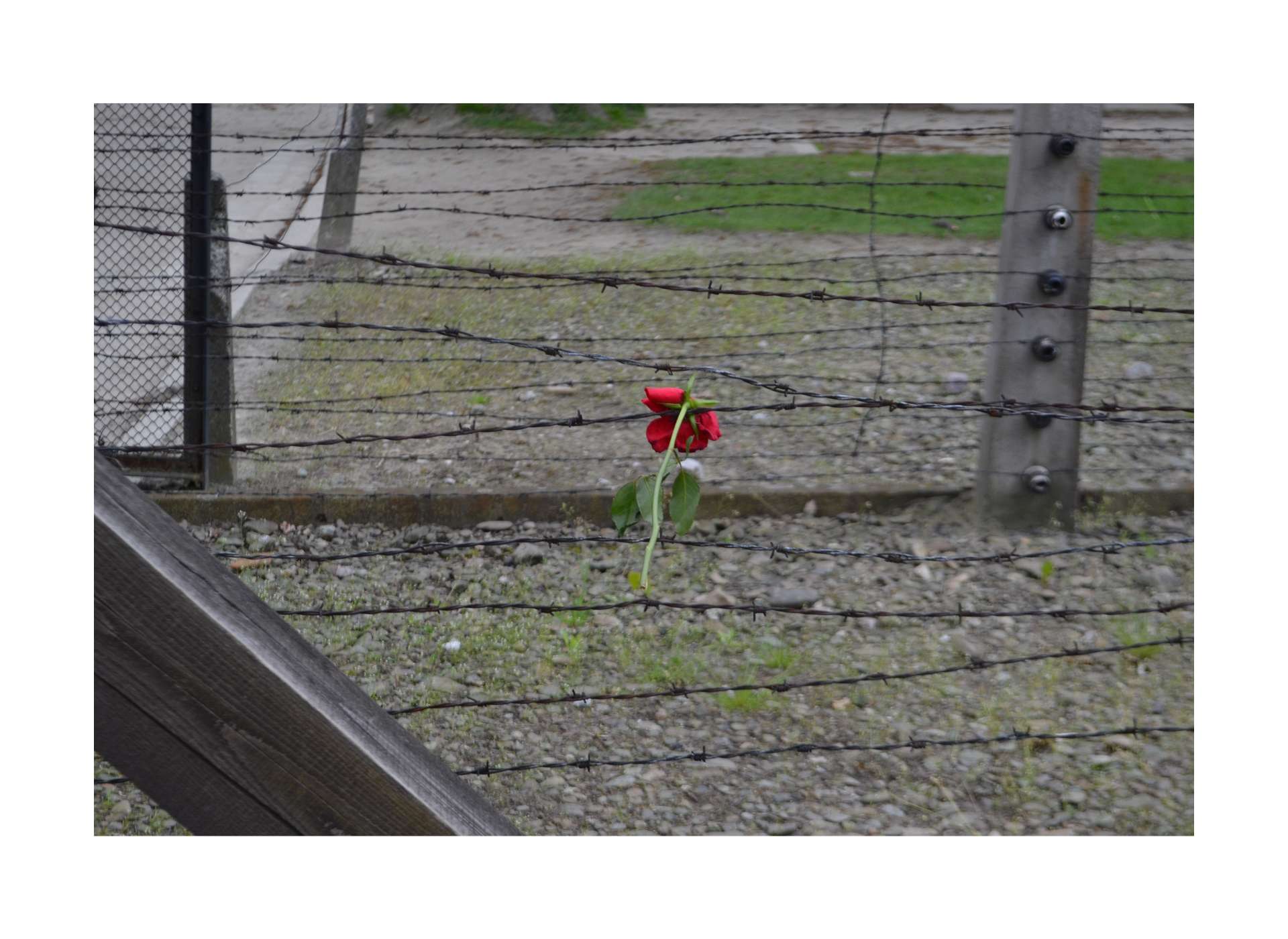
For those unfamiliar with the inner workings of the camp, Auschwitz was a labor camp, and thus there were survivors. Across the highway is the part of the camp known as Birkenau. Birkenau was a death factory. Railway cars filled with Jews and other people condemned to death by the Nazis passed through the single arch entry in the center of the brick administration building that fronts the site.
Atop the entry arch is a guard tower glassed in on four sides and through which the SS guards watched the unloading of the trains inside the camp. On those railroad tracks, innocent victims were beaten with whips, batons, and fists, attacked by dogs, families were separated, individuals were marked to die simply for existing, and the Nazis stained history with blood, terror, and death.
I went up into the guard tower with our group, and took this photograph through an old window that felt like a portal to the past, as a hard glowering sun shined on the spot where people disembarked to be murdered. Behind a lamppost, I could view a wooden railcar still sitting on the line, and down the rails in the distance beyond the tree line I knew the ruins of the crematoria remained.
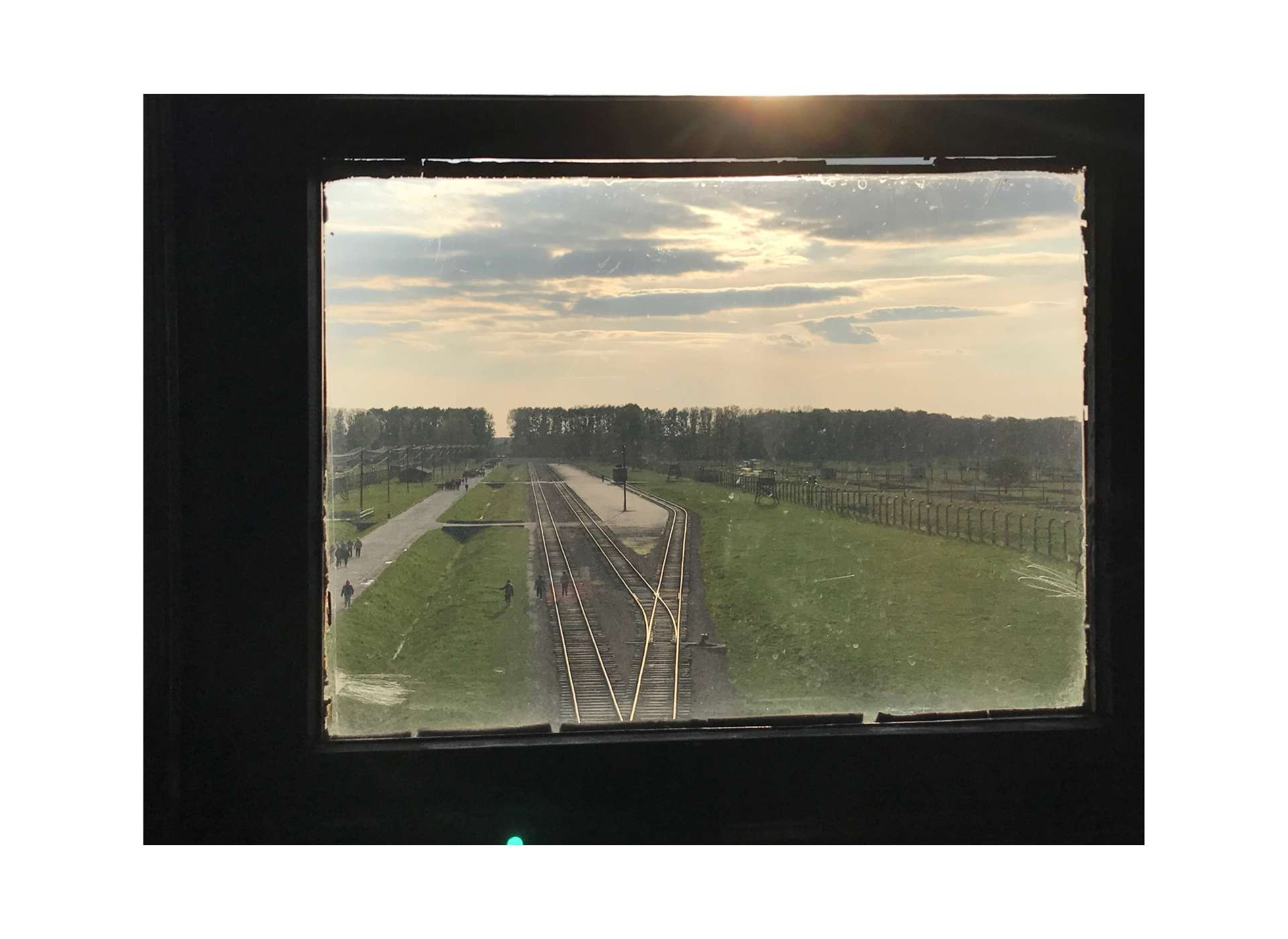
These are only a few of the images I took that day. To be truthful, given my occupation I had felt a deep need to go to this place, to see it with my own eyes, to confront it physically, and to be a witness for its history—but I dreaded it.
I had made certain that my Nikon camera battery was charged that morning, but it drained empty on the site. I switched to my phone camera, and it too rapidly drained almost to empty before we left that day. I don’t know if that means anything, but being in a place where more than a million people violently perished, I don’t think it was coincidental. One simply feels a different and unsettling energy on the earth within those barbed wire fences.
As we left for the bus, I saw two young Jewish women inside the entry arch to Birkenau. While one chanted from her book, the other rocked back and forth on her heels, covering her face. They were praying.
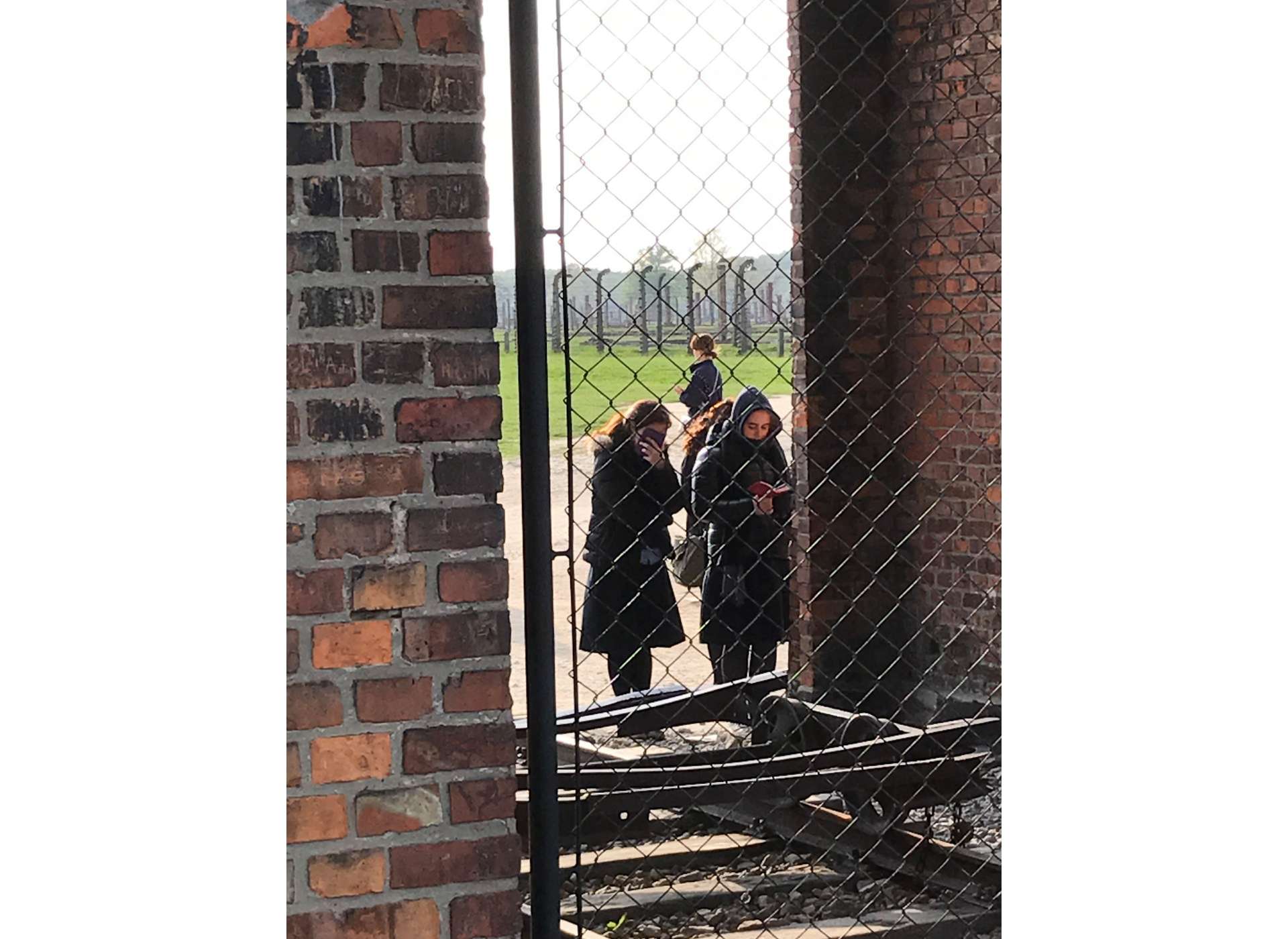
Keith Huxen
Keith is the former Senior Director of Research and History in the Institute for the Study of War and Democracy at The National WWII Museum.
Cite this article:
MLA Citation:
APA Citation:
Chicago Style Citation:
